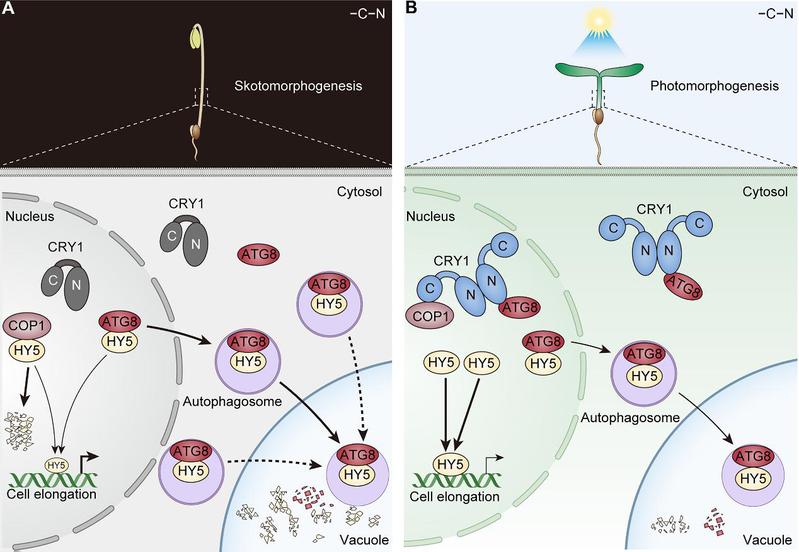Recently, Professor Yang Hongquan's team from the SHNU School of Life Sciences published a research paper titled Photoexcited CRY1 Physical Interactions with ATG8 to Regulate Selective Automation of HY5= and Photogenesis in Arabidopsis online in The Plant Cell, an authoritative academic journal in plant biology https://doi.org/10.1093/plcell/koaf196. The molecular mechanism of blue light receptor cryptochrome CRY1 mediating blue light signaling to promote plant photomorphogenesis by inhibiting selective autophagy of HY5 was reported.
Light is a key environmental factor that regulates plant growth and development, and its regulatory role spans the entire life cycle of plants. Plants perceive dynamic changes in light quality and intensity in their environment through a series of photoreceptors, thereby initiating precise light signal transduction mechanisms to regulate plant growth and development processes. Among them, the blue light receptor cryptochrome (CRY) acts as a light receptor that mediates blue light signals, regulating important physiological processes such as plant photomorphogenesis, photoperiod flowering, stomatal development and opening, DNA double strand break repair, and biological rhythms. CRY is not only found in plants, but also widely distributed in other organisms including bacteria and mammals.




